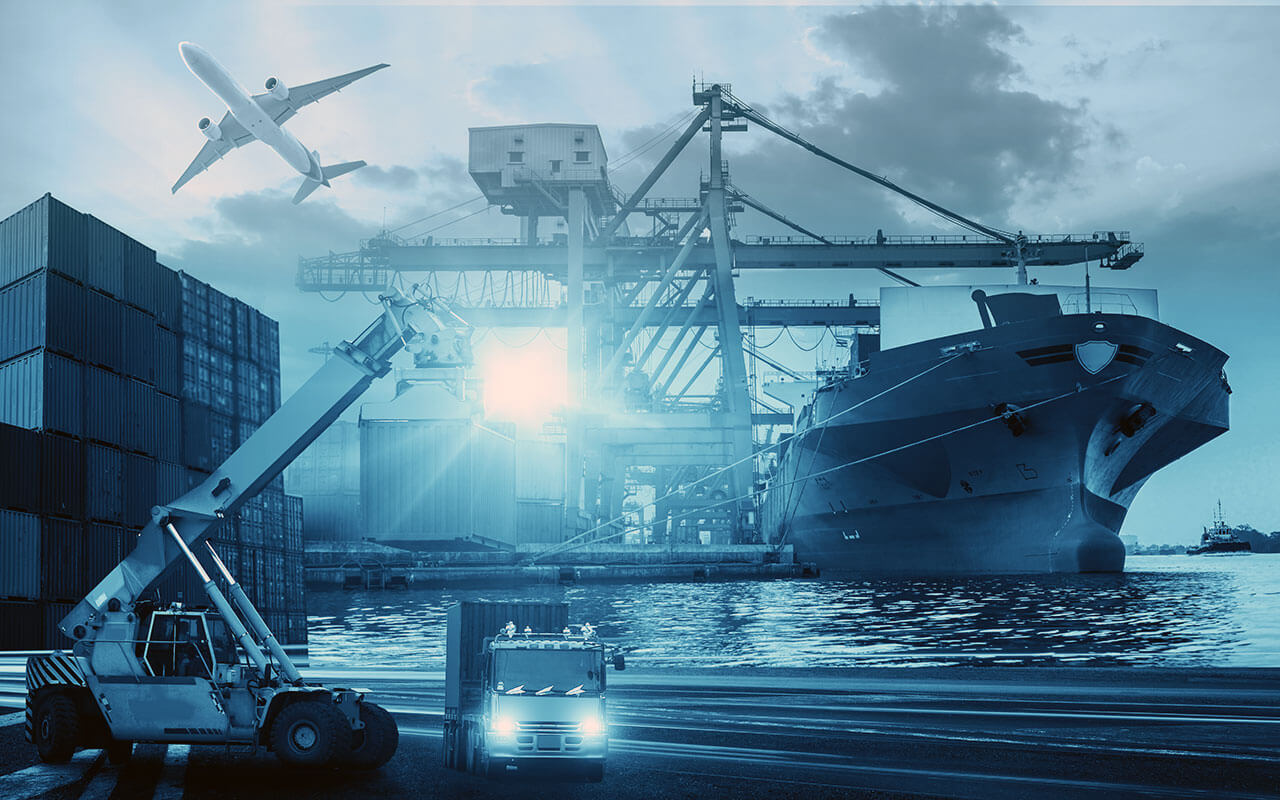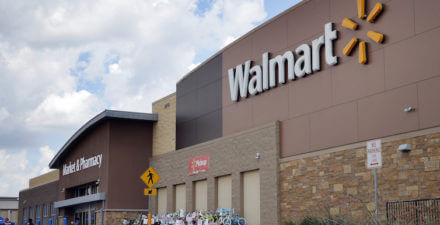Retool U.S. supply chains to address weaknesses exposed by new coronavirus

U.S. economic policymakers need to heed the fast-accumulating warning signs as the global coronavirus outbreak exposes weaknesses in supply chains crucial to American economic well-being. As these weaknesses come to light, U.S. policymakers and supply chain managers should take the opportunity to reduce the fragility of the global supply chains that provide the products and services that Americans rely on every day for their health, their jobs, and their overall economic prosperity.
When U.S. pharmaceutical companies are highly reliant on drug manufacturers in China, India, and elsewhere for their final products and the underlying ingredients, then a regional epidemic, or a government decision to stop exports, can deprive millions of Americans of the medicines they need to maintain their health. When U.S. automakers and auto-parts manufacturers cannot make their products without key parts from China, Mexico, and South Korea, a loss of supply from these locations leads to lost jobs and reduced productivity and economic growth. And when global shipping by air and by sea is crippled by inability to deliver goods to and from China, the negative effects can be felt by not just U.S. corporate giants such as Apple Inc., Intel Corp., and Pfizer Inc., but also by numerous small- and medium-sized U.S. firms alongside trucking and rail freight companies and their workers.
Most of these weaknesses were evident prior to the outbreak of COVID-19, the scientific name for the new coronavirus that emerged from an outdoor wet market in the big industrial city of Wuhan in central China. Before this crisis, supply chains were disrupted by crises such as the 2011 Fukushima Daiichi tsunami in Japan and the SARS epidemic in China and Hong Kong in 2002–2003. While long supply chains inevitably increase disruption risk, the typical models used to make global sourcing decisions do not sufficiently consider this risk to individual firms. Such models even more rarely consider the risk to society, including the potential for undercutting labor and environmental standards, when far-away suppliers win bids partially because they suppress wages and pollute the environment.
There’s another way to design supply chains so that all the players—shareholders, workers, and consumers worldwide—are less exposed to the risks and social costs inherent in today’s global supply chains. Specifically, in the United States, private- and public-sector leaders could build “high-road supply chains,” whose greater collaboration between management and workers along the length of the supply chain would promote sharing of skills and ideas, innovative processes, and, ultimately, better products that can deliver higher profits to firms and higher wages to workers.
This approach is decidedly different than today’s mostly “low-road” supply chains that encourage the offshoring of jobs to smog-choked industrial zones abroad packed with poorly paid workers operating with lax safety and environmental rules. Shipping and reshipping of components across the globe is a significant contributor to climate change.
To be sure, foreign ingenuity has contributed much to our prosperity. We are not advocating that U.S. supply chains become 100 percent domestic. But both public and private leaders need to fully take into account the risks of far-flung supply chains.
One small step to encourage decision-makers to design high-road versus low-road supply chains is to encourage a new approach of global sourcing decision-making: Total Value Contribution, a term the three authors of this column propose in a new working paper now under revision for peer-review publication. Our TVC method encourages managers to first consider how decisions affect value drivers, before considering costs. In addition to increasing attention to shareholder profit-maximizing revenue and risk (which are often neglected in traditional approaches), TVC explicitly encourages managers to price-in other things they purport to value—such as safe, reliable, and sustainable global supply chains.
This method helps firms move away from having purchasing agents, whose pay often depends on reducing the purchase price of a good, make sourcing decisions alone. TVC encourages firms to tap into the expertise of their personnel in marketing and engineering, who have information on what customers value and the potential hidden costs and risks of using suppliers whose prices appear low. At the same time, TVC empowers purchasing agents to contribute their expertise on the multidimensional capabilities of the supply base, rather than pushing them to prioritize cost cutting. It also helps firms make sourcing decisions for groups of products, rather than deciding on a case-by-case basis and, only too late, realizing excessive dependence on a single supplier or region.
We believe these changes work to the long-term benefit of the firm. But firms alone do not bear all the costs of these fragile, low-road supply chains. U.S. economic policymakers have a broad array of tools they could deploy to encourage high-road supply chains.
Take pharmaceuticals. U.S. policymakers must realize they have a duty to the American people to make sure that a critical mass of vital drugs and underlying ingredients are produced in the United States. The federal government needs to encourage pharmaceutical companies to base more of their production in the United States and encourage U.S. consumers to understand the value of doing so, even if it means higher prescription prices in the short term.
There are some easy ways to do this. First, require drug companies to indicate on all labeling where both the finished drug and the active pharmaceutical ingredients were made. This transparency will allow consumers to know where their drugs come from and possibly allow domestic drugs to fetch a price premium. Second, institute unannounced inspections of foreign drug facilities; the current practice is to preannounce foreign plant inspections, giving them a regulatory advantage over domestic plants, where inspections are unannounced. Third, pass on the increased costs of oversight and the societal impact of foreign production of drugs to the firms that produce them. The latter two steps will increase the costs of producing overseas. Taken together, these policies would increase the profitability of producing drugs for U.S. consumers in the United States.
The U.S. Congress and the Trump administration acted last week to ensure there are more medical safety products available domestically to protect healthcare workers from the threat of catching and passing on COVID-19. But that is not enough. There will be another pandemic—or several. Climate change increases the probability of other kinds of natural disasters that can disrupt supply chains. Even before these inevitable events occur, this new coronavirus revealed a dangerous national security issue with our pharmaceutical supply chains.
Consider, too, the importance of the U.S. auto industry to our nation’s innovation and manufacturing generally, to our efforts to reduce greenhouse gases, and to consumer mobility. It’s important that we take steps to reduce the vulnerability of these supply chains. One way that can happen is to locate more manufacturing facilities in the United States, so that more innovation occurs within our nation’s borders to develop ever more clean passenger and freight vehicles. There are numerous ways that policymakers can encourage this kind of innovative “reshoring,” including policies that:
- Nurture supportive ecosystems of innovative small and large firms
- Provide better access to trained workers, applied R&D, and finance
- Convene supply chain players to develop a roadmap for products ripe for reshoring
- Subsidies for innovation and production that help achieve national goals
- Rewritten trade agreements that protect labor and environmental rights
Then, there are the U.S. shipping companies and their workers moving all of these products around the country and around the globe. The coronavirus pandemic is crippling global trade, with the Baltic Index (an index of global shipping) in the tank and with knock-on effects on U.S. domestic shipping and freight industries. In the past, one-time crises such as the terrorist attacks on New York City on September 11, 2001 or the collapse of the commercial and investment banking sector in 2007–2008 led the federal government to bail out a number of service industries affected by the crises. But in addition to reacting in the moment to these crises, the federal government should craft economic policies that mitigate that risk beforehand, including by making our supply chains more robust.
The current coronavirus outbreak is a clear reason for policymakers to act. High-road supply chains built from global sourcing decisions employing the Total Value Contribution approach—with nudges from policymakers that adjust the measurable costs and benefits of foreign production in favor of domestic—would smooth out product flows in global transportation so that future pandemics would put less risk on U.S. firms, workers, and consumers.
—Susan Helper is the Frank Tracy Carlton Professor of Economics at the Weatherhead School of Management at Case Western Reserve University. John Gray is a professor of operations at The Ohio State University’s Fisher College of Business. Beverly Osborn is a Ph.D. student in management sciences at The Ohio State University’s Fisher College of Business.







